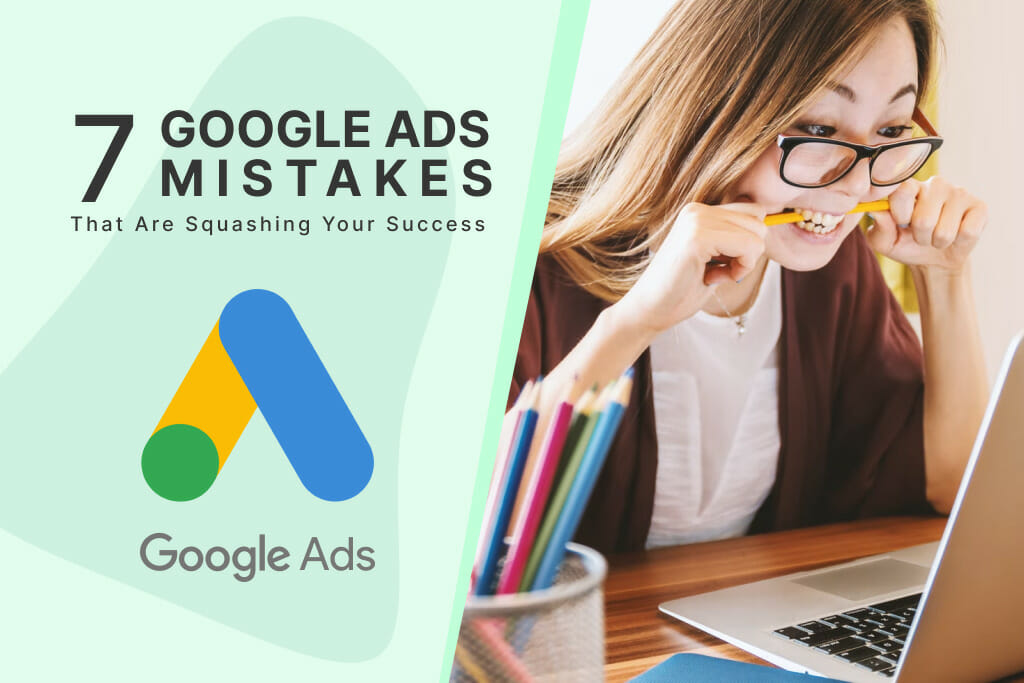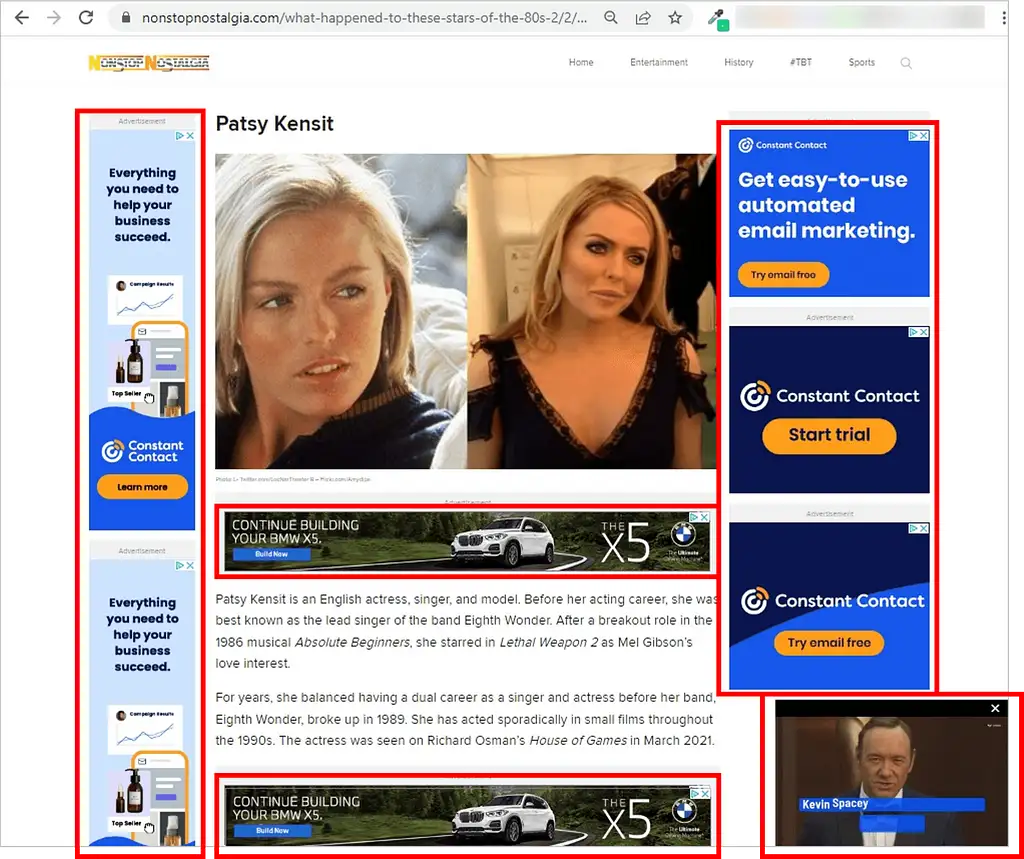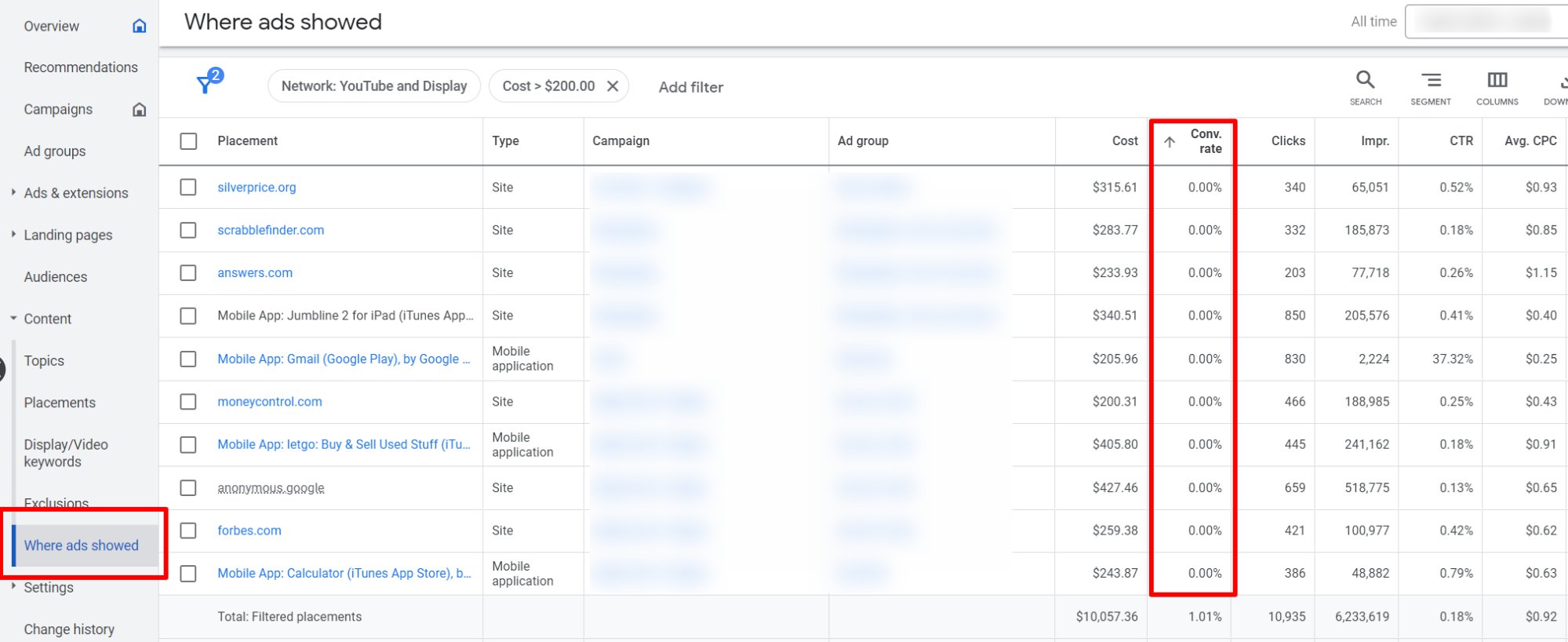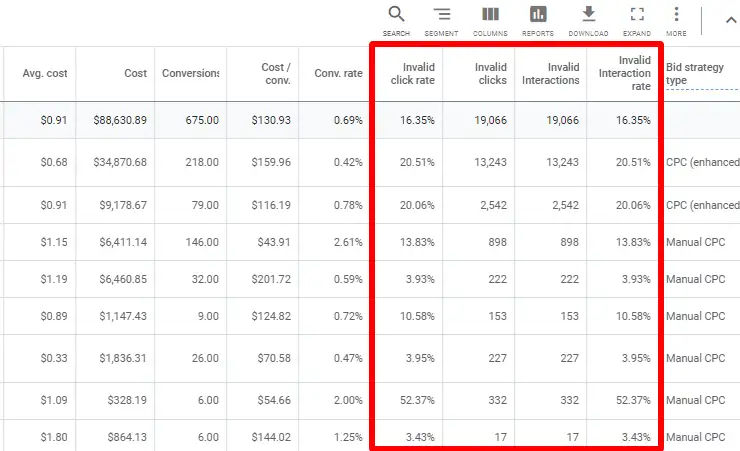Marketers are always looking for ways to improve their campaigns and get better results. But sometimes, in the quest for improvement, advertisers can make mistakes that actually end up harming the chances of success.
In this post, we’ll go over some Google Ads mistakes advertisers make with their online ads and how you can avoid them.
1. Auto-Applying Recommendations
Another common Google Ads mistake is auto-applying recommendations.
Google’s Recommendations feature offers suggestions on how one can improve their campaigns, such as adding negative keywords or increasing the bid on certain keywords.
While these recommendations can be helpful, they’re not always accurate. In fact, sometimes, they can do more harm than good, such as encouraging you to broaden your targeting to spend more money with them.
That’s why it’s important to thoroughly review any recommendations before applying them to the campaigns. Otherwise, one could end up making changes that hurt their performance instead of helping it. So, keep the automated recommendations off, and manually review and apply the ones that make sense.
2. Avoiding Made-For-Advertising Websites
Made-For-Advertising (MFA) websites are created for the purposes of ad arbitrage. They can eat up your display ad budget by providing tons of ad impressions, but they typically provide little or no real value.
Examples of this are sites such as itsthevibe.com or definition.org. These types of sites often have an overwhelming amount of ads surrounding the content, they refresh ad placements frequently, and they place them in locations near important buttons to boost accidental clicks. The content is also often spread out over several pages to entice the user to click to a new page to continue reading a story, thus loading more ads.
These sites can be dangerous and harm your campaign’s efficiency. Here’s a list of nearly 300 made-for-advertising websites to start excluding from your campaigns today.
3. Spending money on placements that don’t convert
If you’re running display campaigns, be sure to check “Where ads showed” inside your Google Ads dashboard. This will list all of the sites Google has automatically placed your ads on.
If there are sites that simply aren’t converting, then select the box next to it and exclude them from your campaigns.
You should also do this exercise with your keywords. If there are some that aren’t converting, then pause or delete them from your campaigns. The search terms report can also help you identify new keywords that you may not be buying, but your ad served due to a sim
Staying hyper-aware of the placements and keywords that aren’t converting is an easy way to boost your overall performance.
4. Ignoring Ad Fraud
Ad fraud and invalid clicks are still a huge problem in the online advertising industry, and it’s only getting worse. The total cost of ad fraud in 2022 is $81 billion and is projected to increase to $100 billion by 2023.
If advertisers are not monitoring and blocking ad fraud, they are essentially throwing money down the drain. Ad fraud can take many different forms, but some of the most common include click fraud, click injections, bot traffic, etc.
Google also doesn’t have foolproof security against ad fraud because it affects their revenue. Hence, every advertiser should opt for independent click fraud protection software with advanced features and intricate algorithms to detect and block all kinds of ad frauds.
5. Forgetting to Add a Ton of Negative Keywords
Negative keywords can be very powerful and an easy way to improve your campaign performance.
Keyword terms such as “jobs,” “free,” or “cancel” can drag down your results since users aren’t typically looking to purchase your product or spend money.
If you’re using broad-match keywords, this is even more critical as Google will display your ads on a very wide-variety of keywords that are only loosely related to the keyword you’re targeting. Even phrase-match keywords can run on unexpected keywords that don’t have value for you.
Therefore, visit your search terms report in your Google Ads campaigns and add negative keywords around any that aren’t relevant or have no poor conversion rates. Here’s a good negative keyword list to start with.
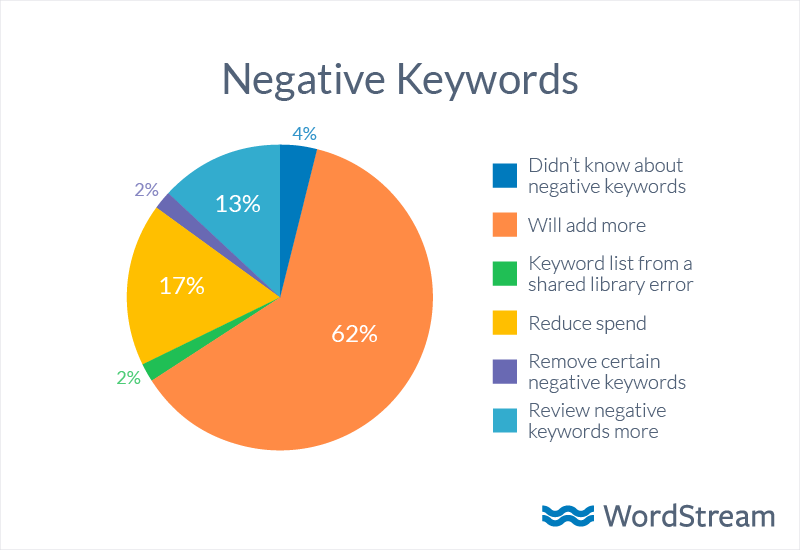
You should add more negative keywords to your campaigns. Source
6. Using the Wrong Conversion Actions
One common Google Ads mistake is using the incorrect conversion action. A conversion action is an important metric that tells whether or not someone took the desired action on the website after seeing the ad.
There are a variety of different conversion actions one can track, such as form submissions, newsletter sign-ups, and purchases. However, not all of these conversion actions are equally valuable to the business.
For example, a form submission might be worth $5 to a business, while a purchase might be worth $500.
Therefore, it’s important to choose the conversion action that is most valuable to the business and focus the campaigns on optimizing for that goal. Otherwise, advertisers could be wasting the time and money on conversion actions that don’t actually move the needle for the business.
7. Not A/B Testing With Google’s Experiments Page
If one is not using Google’s new Experiments page, they are missing out on a lot of valuable features and insights. With the new Experiments update, advertisers can now create an experiment (or test) in one step. That means no more creating drafts first!
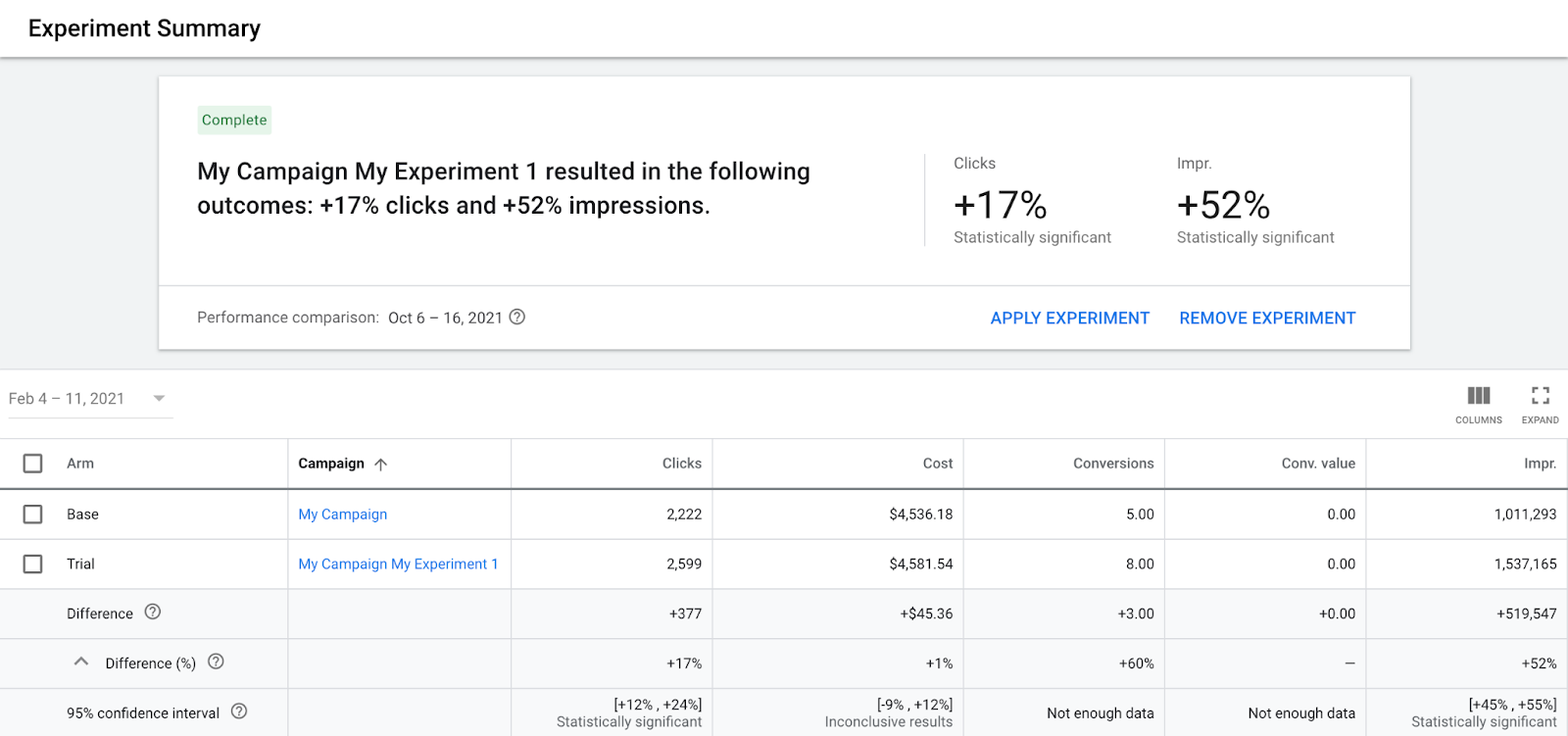
Screenshot of “Experiments” available in Google Ads. Source
Additionally, advertisers will now be able to monitor all tests on the Experiments page. From this page, marketers are able to apply any experiment changes in one click. Google Ads is rolling out a new way to sync the experiments with their corresponding campaigns. In the past, one had to manually copy over any changes from one campaign to the other. Now it will automatically update the experiment with any changes one makes in the original campaigns. For example, if you add new keywords to a campaign while you’re running an experiment on it. These keywords will automatically be added to your experiment campaign as well.
The Google Ads platform isn’t something one can just jump into and expect to be successful with. It takes a lot of time and patience to learn how to use it effectively, but once you do, the rewards can be huge! If you’re ready to take your business to the next level, remember that these are some Google Ads mistakes that are holding many businesses back.
|
Recommended posts
|

